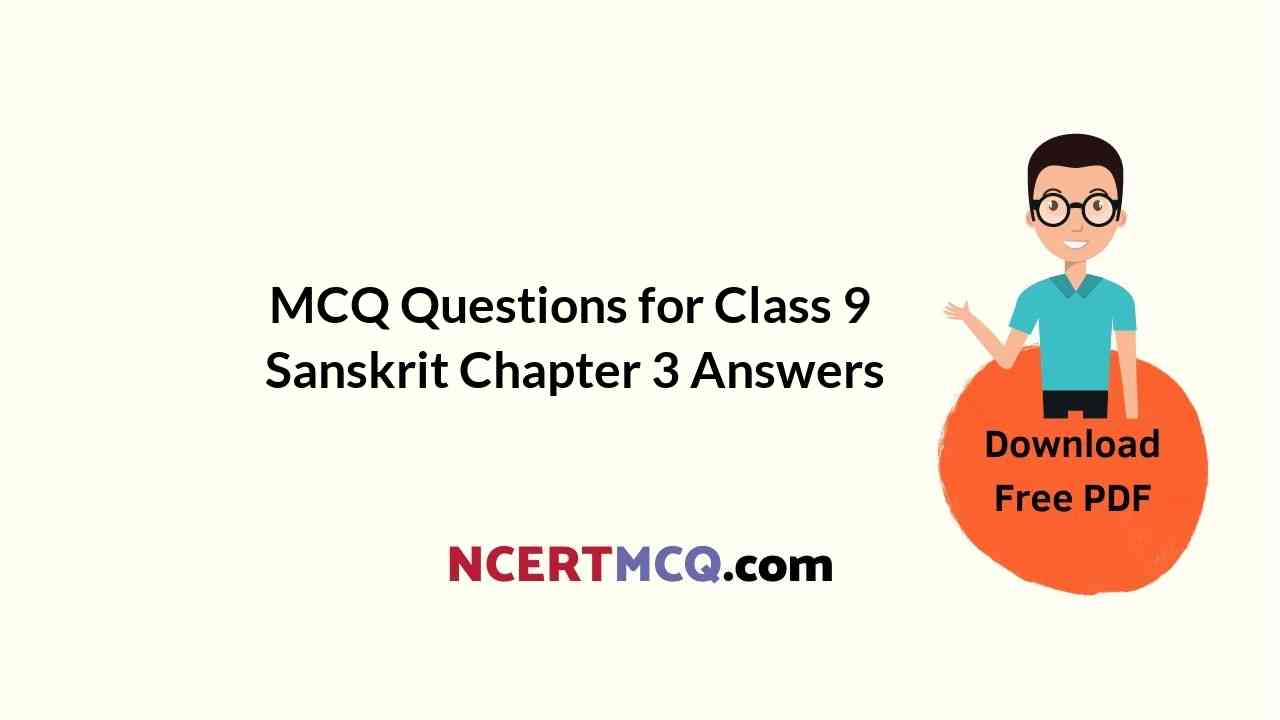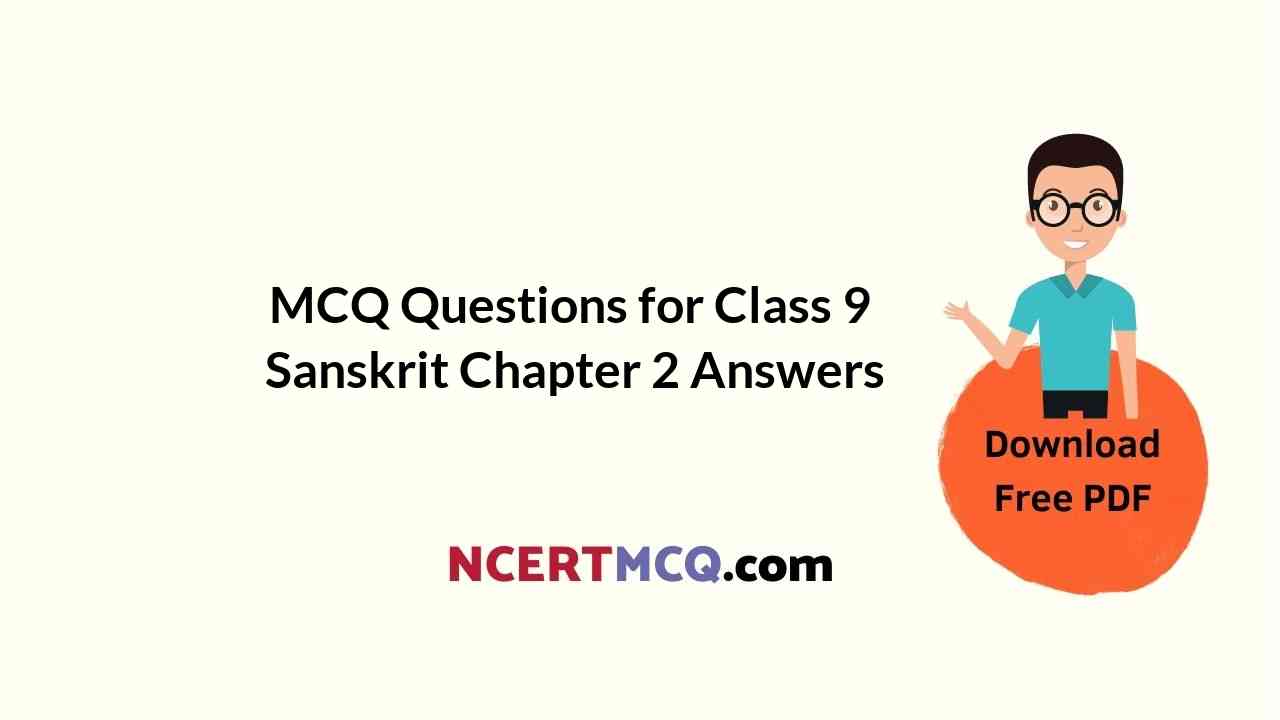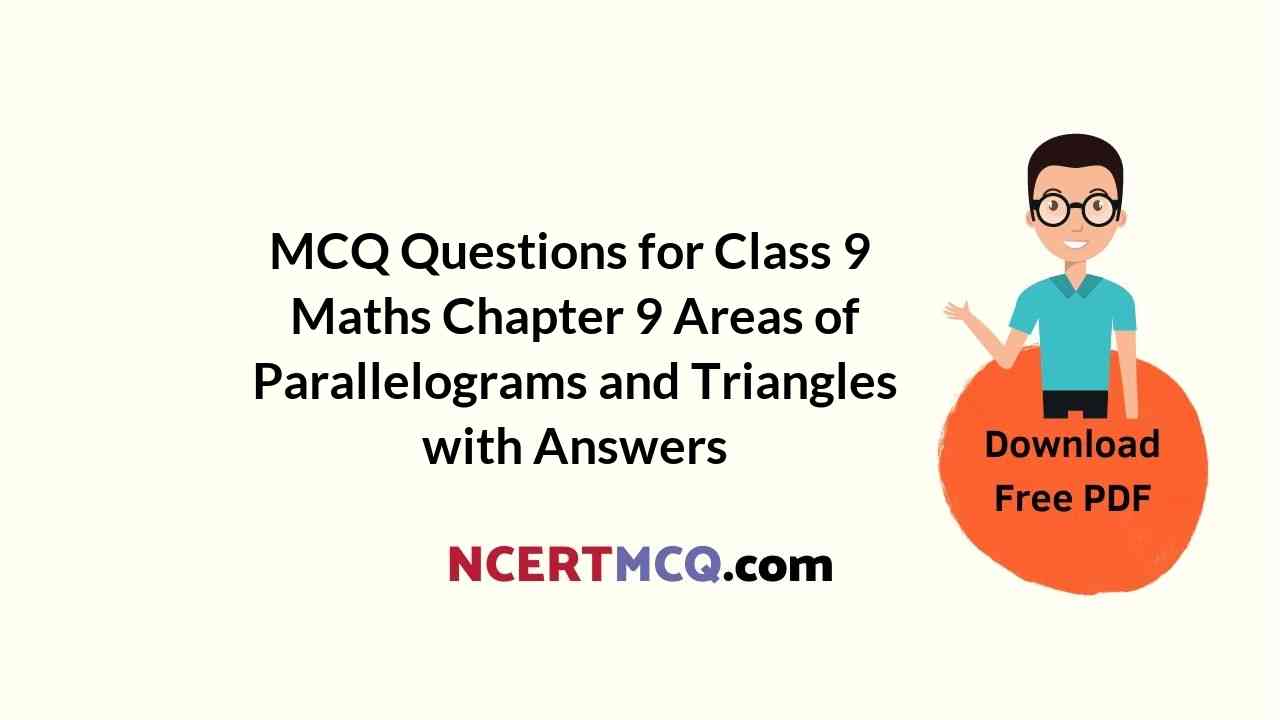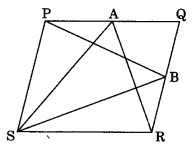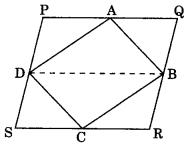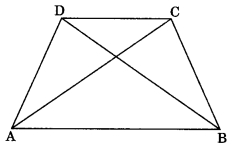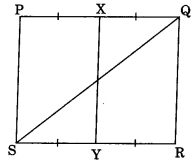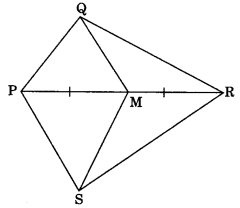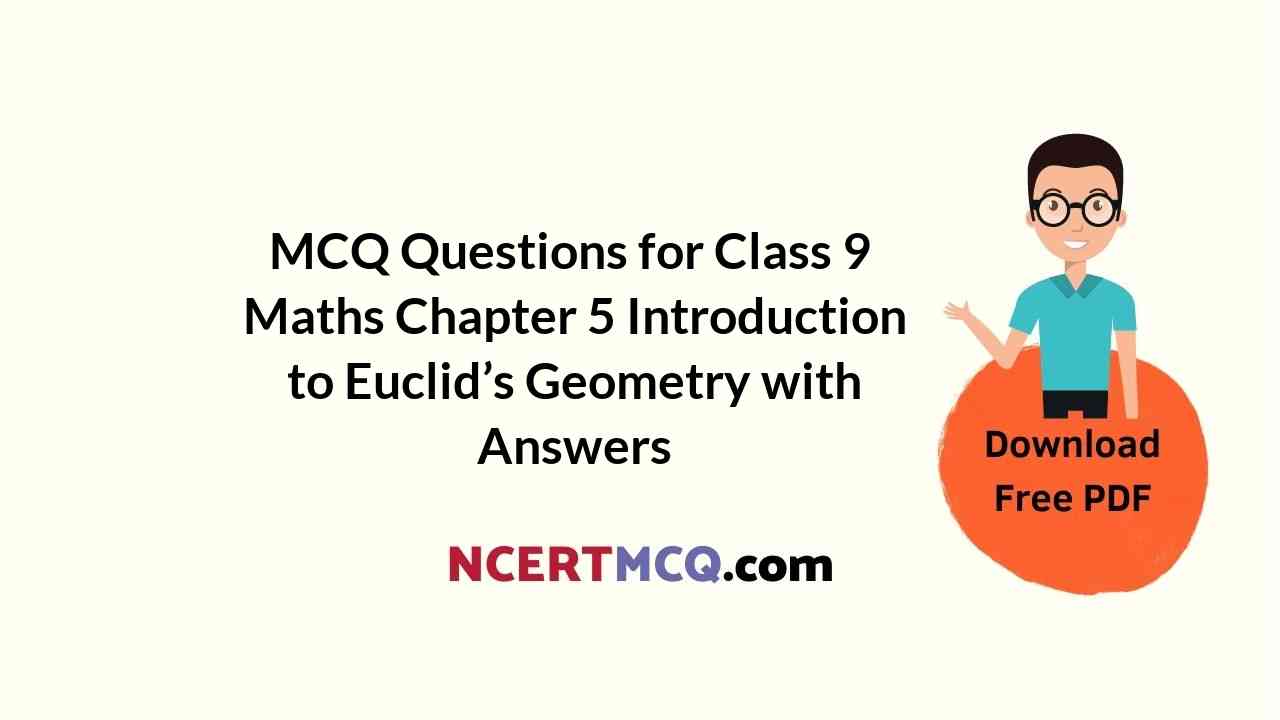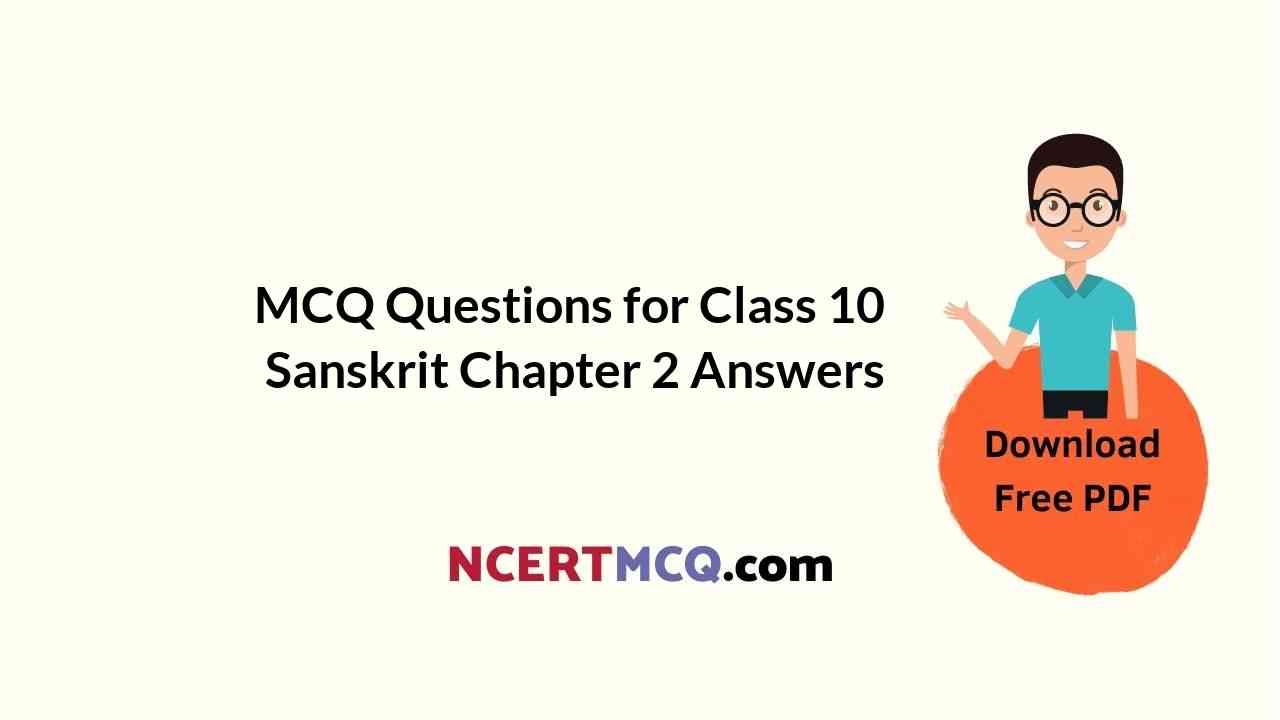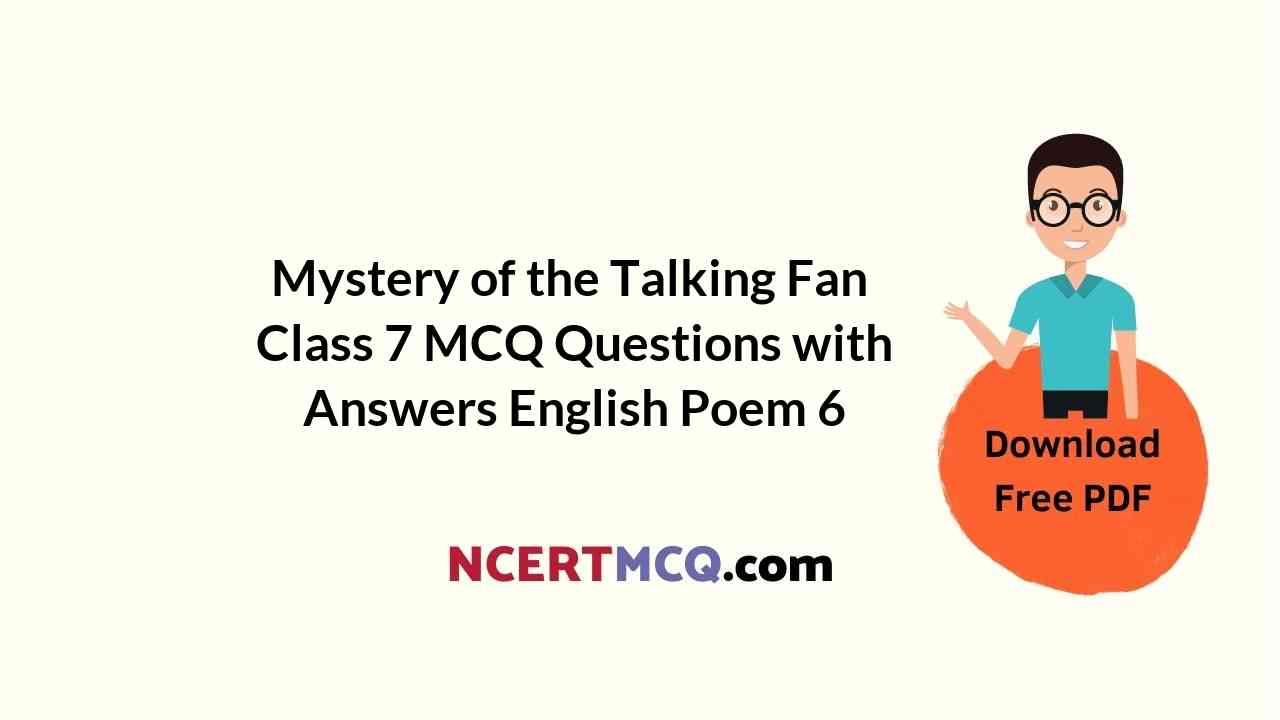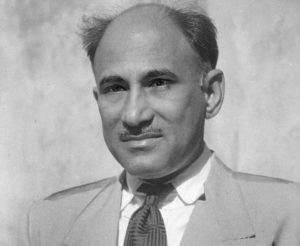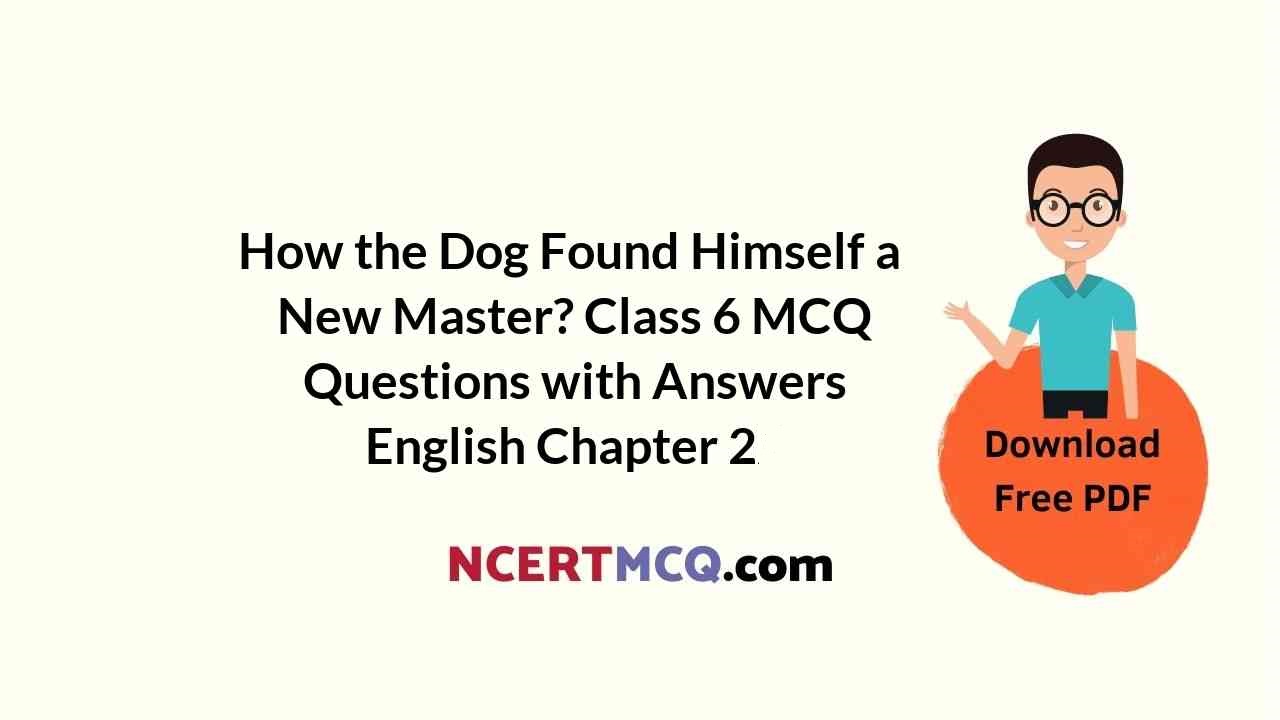Check the below NCERT MCQ Questions for Class 9 Sanskrit Chapter 3 गोदोहनम् with Answers Pdf free download. MCQ Questions for Class 9 Sanskrit with Answers were prepared based on the latest exam pattern. We have provided गोदोहनम् Class 9 Sanskrit MCQs Questions with Answers to help students understand the concept very well. https://ncertmcq.com/mcq-questions-for-class-9-sanskrit-with-answers/
Students can also read NCERT Solutions for Class 9 Sanskrit Chapter 3 Questions and Answers at LearnInsta. Here all questions are solved with a detailed explanation, It will help to score more marks in your examinations.
रेखाङ्कित आधृत्य प्रश्ननिर्माणम् कुरुत
Sanskrit Class 9 Chapter 3 MCQ Question 1.
मल्लिका मोदकानि रचयन्ति मन्दस्वरेण शिवस्तुतिं करोति।
(क) कः
(ख) किम्
(ग) कम्
(घ) का
Answer
Answer:
मल्लिका मोदकानि रचयन्ति मन्दस्वरेण (ख) किम् करोति?
Class 9 Sanskrit Chapter 3 MCQ Question 2.
मोदकगन्धम् अनुभवन् चन्दनः प्रसन्नमनाः प्रविशति।
(क) का
(ख) किम्
(ग) कः
(घ) कथम्
Answer
Answer:
मोदकगन्धम् अनुभवन् (ग) कः प्रसन्नमनाः प्रविशति?
Class 9 Sanskrit Chapter 3 MCQ With Answers Question 3.
हस्तनिर्मितानि मोदकानि दृष्ट्वा चन्दनः जिह्वालोलुपतां नियन्त्रयितुम् अक्षमः आसीत्।
(क) किम्
(ख) कानि
(ग) का
(घ) कः
Answer
Answer:
(ख) कानि दृष्ट्वा चन्दनः जिह्वालोलुपता नियन्त्रयितुम् अक्षमः आसीत्?
Class 9 Sanskrit Ch 3 MCQ Question 4.
एतानि मोदकानि पूजानिमित्तानि सन्ति।
(क) कथम्
(ख) कानि
(ग) कान्
(घ) किमर्थम्
Answer
Answer:
एतानि मोदकानि (घ) किमर्थम् सन्ति?
Ch 3 Sanskrit Class 9 MCQ Question 5.
मल्लिका स्वसखिभिः सह काशीविश्वनाथमन्दिरं गन्तुम् इच्छति।
(क) काभिः
(ख) कैः
(ग) कया
(घ) केन
Answer
Answer:
मल्लिका (क) काभिः सह काशीविश्वनाथमन्दिरं गन्तुम् इच्छति?
Class 9 Sanskrit Chapter 1 MCQ With Answers Question 6.
तया सह. चम्पा, गौरी, माया, मोहिमी, कपिलाद्याः सर्वाः गच्छन्ति।
(क) के
(ख) का
(ग) कः
(घ) काः
Answer
Answer:
तया सह (घ) काः गच्छन्ति?
Sanskrit Quiz For Class 9 Question 7.
सखिभिः सह धर्मयात्रया आनन्दिता च भव।
(क) कैः
(ख) काभिः
(ग) केन
(घ) कया
Answer
Answer:
(ख) काभिः सह धर्मयात्रया आनन्दिता च भव?
Class 9 Sanskrit MCQ Question 8.
मल्लिका तु धर्मयात्रायै गता।
(क) के
(ख) कः
(ग) का
(घ) काः
Answer
Answer:
(ग) का तु धर्मयात्रायै गता?
Sanskrit MCQ Class 9 Question 9.
दुग्धदोहनं कृत्वा ततः प्रातराशस्य प्रबन्धं करिष्यामि।
(क) किम्
(ख) कम्
(ग) काम्
(घ) कथम्
Answer
Answer:
(क) किम् कृत्वा ततः प्रातराशस्य प्रबन्धं करिष्यामि?
Question 10.
तव मातुलानी तु गङ्गास्नानार्थं काशी गता अस्ति।
(क) का
(ख) काः
(ग) के
(घ) कः
Answer
Answer:
तव (ग) का तु गङ्गास्नानार्थं काशी गता अस्ति?
Question 11.
मासानन्तरं गृहे महोत्सवः भविष्यति।
(क) कुत्र
(ख) कति
(ग) कदा
(घ) किम्
Answer
Answer:
(ग) कदा गृहे महोत्सवः भविष्यति?
Question 12.
तत्र त्रिशत-सेटकमितं दुग्धम् अपेक्षते।
(क) का
(ख) कति
(ग) कः
(घ) किम्
Answer
Answer:
तत्र (ख) कति सेटकमितं दुग्धम् अपेक्षते?
Question 13.
मासान्ते एव दुग्धस्य आवश्यकता भवति।
(क) कदा
(ख) किम्
(ग) कुत्र
(घ) के
Answer
Answer:
(क) कदा दुग्धस्य आवश्यकता भवति?
Question 14.
ग्रामप्रमुखस्य गृहे महोत्सवः मासान्त भविष्यति।
(क) कस्य
(ख) कः
(ग) किम्
(घ) कस्याः
Answer
Answer:
(क) कस्य गृहे महोत्सवः मासान्ते भविष्यति?
Question 15.
उत्सवदिने एव समग्रं दुग्धं धोक्ष्यावः।
(क) कस्य
(ख) कस्मिन्
(ग) कदा
(घ) कः
Answer
Answer:
(ग) कदा एव समग्रं दुग्धं धोक्ष्यावः?
Question 16.
अधुना दुग्धदोहनम् विहाय केवलं नन्दिन्याः सेवाम् एव करिष्यावः।
(क) कः
(ख) काम्
(ग) किम्
(घ) कम्
Answer
Answer:
अधुना दुग्धदोहनम् विहाय केवलं (ग) किम् एवं करिष्याव:?
Question 17.
द्वावेव धेनोः सेवायां निरतौ भवतः।
(क) कः
(ख) कस्य
(ग) कस्याः
(घ) कस्मिन्
Answer
Answer:
द्वावेव (ग) कस्याः धेनोः सेवायां निरतौ भवतः?
Question 18.
दुग्धार्थं पात्र प्रबन्धोऽपि करणीयः।
(क) कः
(ख) किम्
(ग) का
(घ) काम्
Answer
Answer:
दुग्धार्थं (क) कः अपि करणीयः?
Question 19.
सर्वं जीवनं भङ्गुरं ज्ञात्वा अपि कुम्भकारः घटान् रचयति।
(क) कान्
(ख) काम्
(ग) किम्
(घ) कम्
Answer
Answer:
सर्व जीवनं भङ्गुरं ज्ञात्वा अपि कुम्भकारः (क) कान् रचयति?
Question 20.
मूल्यं विना तु एकमपि घटं न दास्यामि।
(क) कः
(ख) कम्
(ग) किम्
(घ) काम्
Answer
Answer:
मूल्यं विना तु एकमपि (ख) कम् दास्यामि?
Question 21.
दुग्धं विक्रीय एव घटमूल्यम् ददातु।
(क) कदा
(ख) कथम्
(ग) कम्
(घ) किम्
Answer
Answer:
(क) कदा एव घटमूल्यम् ददातु?
Question 22.
यदा धेनोः समीपं गत्वा दोग्धुम् इच्छति, तदा धेनुः पृष्ठपादेन प्रहरति।
(क) कः
(ख) केन
(ग) कथम्
(घ) का
Answer
Answer:
यदा धेनोः समीपं गत्वा दोग्धुम् इच्छति, तदा धेनुः (ख) केन प्रहरति?
Question 23.
दोहन प्रक्रियाम् आरभमाणम् एवं धेनुः ताडयति।
(क) किम्
(ख) कम्
(ग) केन
(घ) कदा
Answer
Answer:
(क) किम् आरभमाणम् एव धेनुः ताडयति?
Question 24.
दिनस्य कार्य तस्मिन्नेव दिने कर्त्तव्यम्।
(क) किम्
(ख) के
(ग) कथम्
(घ) कदा
Answer
Answer:
दिनस्य कार्य (घ) कदा कर्त्तव्यम्?
निम्नलिखितं संवादं पठित्वा तदाधारितानां प्रश्नानाम् उत्तराणि लिखत
(प्रथमं दृश्यम्) (मल्लिका मोदकानि रचयन्ती मन्दस्वरेण शिवस्तुतिं करोति)
(ततः प्रविशति मोदकगन्धम् अनुभवन् प्रसन्नमना चन्दनः।)
चन्दनः – अहा! सुगन्धस्तु मनोहरः (विलोक्य) अये मोदकानि रच्यन्ते? (प्रसन्नः भूत्वा) आस्वादयामि तावत्। (मोदकं गृहीतुमिच्छति)
मल्लिका – (सक्रोधम्) विरम। विरम। मा स्पृश! एतानि मोदकानि।
चन्दनः – किमर्थं क्रुध्यसि! तव हस्तनिर्मितानि मोदकानि दृष्ट्वा अहं जिह्वालोलुपतां नियन्त्रयितुम् अक्षमः अस्मि, किं न जानासि त्वमिदम्?
मल्लिका – सम्यग् जानामि नाथ! परम् एतानि मोदकानि पूजानिमित्तानि सन्ति।
चन्दनः – तर्हि, शीघ्रमेव पूजनं सम्पादय। प्रसादं च देहि।
Question 1.
ततः कीदृशः चन्दनः प्रविशति?
Answer
Answer: प्रसन्नमना
Question 2.
मल्लिका कानि अरचयत्?
Answer
Answer: मोदकानि
Question 3.
मल्लिका मन्दस्वरेण किं करोति स्म?
Answer
Answer: शिवस्तुति
Question 4.
चन्दनः कानि दृष्ट्वा स्वजिह्वालोलुपतां नियन्त्रयितुम् अक्षमः आसीत्?
Answer
Answer: चन्दनः मल्लिकायाः हस्तनिर्मितानि मोदकानि दृष्ट्वा स्वजिह्वालोलुपत्तां नियन्त्रयितुम् अक्षमः आसीत्।
Question 5.
एतानि मोदकानि कस्याः निमित्तानि सन्ति?
Answer
Answer: एतानि मोदकानि पूजायाः निमित्तानि सन्ति।
Question 6.
‘हस्तनिर्मितानि मोदकानि’ अनयोः पदयोः विशेषणपदं किम्?
Answer
Answer: हस्तनिर्मितानि
Question 7.
‘किं न जानासि त्वमिदम्’ अत्र वाक्ये क्रियापदं किमस्ति?
Answer
Answer: जानासि
Question 8.
संवादे ‘दृष्ट्वा’ इत्यस्य पदस्य कः पर्यायः प्रयुक्तोऽस्ति?
Answer
Answer: विलोक्य
Question 9.
‘अये मोदकानि रच्यन्ते’ आस्मिन वाक्ये कर्तृपदं किम्?
Answer
Answer: मोदकानि
मल्लिका – भो! अत्र पूजनं न भविष्यति। अहं स्वसखिभिः सह श्वः प्रातः काशीविश्वनाथमन्दिरं प्रति गमिष्या. मि, तत्र गङ्गास्नानं धर्मयात्राञ्च वयं करिष्यामः।
चन्दनः – सखिभिः सह! न मया सह! (विषादं नाटयति)
मल्लिका – आम्। चम्पा, गौरी, माया, मोहिनी, कपिलाद्याः सर्वाः गच्छन्ति। अतः, मया सह तवागमनस्य औचित्यं नास्ति। क्यं सप्ताहान्ते प्रत्यागमिष्यामः। तावत्, गृह व्यवस्था, धेनोः दुग्धदोहनव्यवस्थाञ्च परिपालय।
Question 1.
मल्लिका काभिः सह धर्मयात्रां गच्छति?
Answer
Answer: स्वसखिभिः
Question 2.
मल्लिकायाः अनुपस्थितौ गृहव्यवस्थां कः परिपालयिष्यति?
Answer
Answer: चन्दनः
Question 3.
सा स्वसखिभिः सह कुत्र गमिष्यति?
Answer
Answer: काशीविश्वनाथमन्दिरम्।
Question 4.
मल्लिकया सह काशीविश्वनाथमन्दिरं प्रति काः गच्छन्ति?
Answer
Answer: मल्लिकया सह काशीविश्वनाथमन्दिरं प्रति चम्पा, गौरी, माया, मोहिनी, कपिलाद्याः सर्वाः गच्छन्ति।
Question 5.
मल्लिका सखिभिः सह तत्र किं करिष्यति?
Answer
Answer: मल्लिका सखिभिः सह तत्र गङ्गास्नानं धर्मयात्राज्य करिष्यति।
Question 6.
संवादे ‘गमिष्यामि’ क्रियापदस्य कर्तृपदं कि वर्तते?
Answer
Answer: अहम्
Question 7.
संवादे ‘पूजा’ पदस्य कः पर्यायः आगतः?
Answer
Answer: पूजनम्
Question 8.
अत्र संवादे ‘प्रसन्नताम्’ इत्यस्य पदस्य कः विपर्ययः आगतः?
Answer
Answer: विषादम्
Question 9.
‘एषा व्यवस्था भवद्भिः करणीया।’ अत्र भवद्भिः इति कर्तृपदस्य कियापदं किमस्ति?
Answer
Answer: करणीया
चन्दनः – अस्तु। गच्छ। सखिभिः सह धर्मयात्रया आनन्दिता च भव। अहं सर्वमपि परिपालयिष्यामि। शिवास्ते सन्तु पन्थानः।
चन्दनः – मल्लिका तु धर्मयात्रायै गता। अस्तु। दुग्धदोहनं कृत्वा ततः स्वप्रातराशस्य प्रबन्धं करिष्यामि। (स्त्रीवेषं धृत्वा, दुग्धपात्रहस्तः नन्दिन्याः समीपं गच्छति)
उमा – मातुलानि! मातुलानि!
चन्दनः – उमे! अहं तु मातुलः। तव मातुलनी तु गङ्गास्नानार्थं काशीं गता अस्ति। कथय! किं ते प्रियं करवाणि?
उमा – मातुल! पितामहः कथयति, मासानन्तरम् अस्मत् गृहे महोत्सवः भविष्यति। तत्र त्रिशत-सेटकमितं दुग्धम् अपेक्षते। एषा व्यवस्था भवद्भिः करणीया।
चन्दनः – (प्रसन्नमनसा) त्रिशत-सेटककपरिमितं दुग्धम्! शोभनम्। दुग्धव्यवस्था भविष्यति एव इति पितामहं प्रति त्वया वक्तव्यम्।
उमा – धन्यवादः मातुल! याम्यधुना। (सा निर्गता)
Question 1.
कीदृशः चन्दनः नन्दिन्याः समीपं गच्छति?
Answer
Answer: दुग्धपात्रहस्तः
Question 2.
तत्र कति मात्रं दुग्धम् अपेक्षते?
Answer
Answer: त्रिशत-सेटकमितम्
Question 3.
कः सर्वमपि परिपालयिष्यति?
Answer
Answer: चन्दनः
Question 4.
मासान्तरम् उमायाः गृहे कः भविष्यति?
Answer
Answer: मासानन्तम् अस्यत् गृहे महोत्सवः भविष्यति।
Question 5.
धर्मयात्रायै का गता?
Answer
Answer: मल्लिका तु धर्मयात्रायै गता।
Question 6.
संवादे ‘त्वया’ इति कर्तृपदस्य क्रियापदं किम्?
Answer
Answer: वक्तव्यम्
Question 7.
‘शिवास्ते सन्तु पन्थानः’ अत्र विशेषणपदं किमस्ति?
Answer
Answer: शिवाः
Question 8.
संवादे ‘मार्गा;’ इत्यस्य पदस्य कः पर्यायः आगतः?
Answer
Answer: पन्थानः
Question 9.
नाट्यांशे ‘दूरम्’ इत्यस्य पदस्य कः विपर्ययः लिखितः?
Answer
Answer: समीपम्
चन्दनः – (प्रसन्नो भूत्वा, अङ्गलिषु गणयन्) अहो! सेटक-त्रिशतकानि पयांसि! अनेन तु बहुधनं लप्स्ये। (नन्दिनीं दृष्ट्वा) भो नन्दिनि! तव कृपया तु अहं धनिकः भविष्यामि। (प्रसन्नः सः धेनोः बहुसेवां करोति)
चन्दनः – (चिन्तयति) मासान्ते एव दुग्धस्य आवश्यकता भवति। यदि प्रतिदिनं दोहनं करोमि तर्हि दुग्धं सुरक्षितं न तिष्ठति। इदानीं किं करवाणि? भवतु नाम मासान्ते एव सम्पूर्णतया दुग्धदोहनं करोमि।
(एवं क्रमेण सप्तदिनानि व्यतीतानि। सप्ताहान्ते मल्लिका प्रत्यागच्छति)
मल्लिका – (प्रविश्य) स्वामिन्! प्रत्यागता अहम्। आस्वादय प्रसादम्। (चन्दनः मोदकानि खादति वदति च)।
चन्दनः – मल्लिके! तव यात्रा तु सम्यक् सफला जाता? काशीविश्वनाथस्य कृपया प्रियं निवेदयामि।
मल्लिका – (सा श्चर्यम् ) एवम्। धर्मयात्रातिरिक्तं प्रियतरं किम्?
Question 1.
मासान्ते कस्य आवश्यकता भवति?
Answer
Answer: दुग्धस्य
Question 2.
एवं क्रमेण कानि व्यतीतानि?
Answer
Answer: सप्तदिनानि
Question 3.
चन्दनः कस्याः बहुसेवां करोति?
Answer
Answer: धेनोः।
Question 4.
कस्याः कृपया तु चन्दनः धनिको भविष्यति?
Answer
Answer: नन्दिन्याः कृपया तु चन्दनः धनिको भविष्यति।
Question 5.
दुग्धं कदां सुरक्षितं न भविष्यति?
Answer
Answer: यदा सः प्रतिदिनं दुग्धदोहनं करिष्यतिर्तदा दुग्धं सुरक्षितं न भविष्यति।
Question 6.
‘तव कृपया तु अहं धनिकः भविष्यामि।’ अत्र विशेषणपदं किम्?
Answer
Answer: धनिकः
Question 7.
‘प्रसन्नः सन् सः धेनोः बहुसेवां करोति’। अत्र वाक्ये कर्तृपदं किम् अस्ति?
Answer
Answer: सः
Question 8.
संवादे ‘गोः’ इति पदस्य कः पर्यायः आगतः?
Answer
Answer: धेनोः
Question 9.
‘निस्सृत्य’ इति पदस्य विपर्ययपदं किम् आगतम् अस्ति?
Answer
Answer: प्रविश्य
चन्दनः – ग्रामप्रमुखस्य गृहे महोत्सवः मासान्ते भविष्यति। तत्र त्रिशत-सेटकमितं दुग्धम् अस्माभिः दातव्यम् अस्ति।
मल्लिका – किन्तु एतावन्मानं दुग्धं कुतः प्राप्स्यामः।
चन्दनः – विचारय मल्लिके! प्रतिदिनं दोहनं कृत्वा दुग्धं स्थापयामः चेत् तत् सुरक्षितं न तिष्ठति। अत एव दुग्धदोहनं न क्रियते। उत्सवदिने एव समग्रं दुग्धं धोक्ष्यावः।
मल्लिका – स्वामिन्! त्वं तु चतुरतमः। अत्युत्तमः विचारः। अधुना दुग्धदोहनं विहाय केवलं नन्दिन्याः सेवाम् एव करिष्यावः। अनेन अधिकाधिकं दुग्धं मासान्ते प्राप्स्यावः।
(द्वावेव धेनोः सेवायां निरतौ भवतः। अस्मिन् क्रमे घासादिकं गुडादिकं च भोजयतः। कदाचित् विषाणयोः तैलं लेपयतः तिलकं धारयतः, रात्रौ नीराजनेनापि तोषयतः)
चन्दनः – मल्लिके! आगच्छ। कुम्भकारं प्रति चलावः। दुग्धार्थं पात्रप्रबन्धोऽपि करणीयः। (द्वावेव निर्गतौ)
Question 1.
ग्रामप्रमखस्य गृहे महोत्सवः कदा भविष्यति?
Answer
Answer: मासान्ते
Question 2.
मल्लिकायाः दृष्टौ चन्दनस्य विचारः कीदृशः अस्ति?
Answer
Answer: अत्युत्तमः
Question 3.
द्वावेव कस्याः सेवायां निरतौ भवतः?
Answer
Answer: धेनोः।
Question 4.
अधुना तौ दुग्धदोहनं विहाय किं करिष्यतः?
Answer
Answer: अधुना तौ दुग्धदोहनं विहाय केवलं नन्दिन्याः सेवाम् एव करिष्यतः।
Question 5.
तौ धेनोः सेवायां किम् भोजयतः?
Answer
Answer: तौ धेनोः सेवायां घासादिकं गुडादिकं च भोजयतः।
Question 6.
संवादे ‘भवतः’ इति कर्तृपदस्य क्रियापदं किम्?
Answer
Answer: द्वौ
Question 7.
‘त्वं तु चतुरतमः’ अत्र विशेष्यपदं किमस्ति?
Answer
Answer: त्वम्
Question 8.
अत्र संवादे ‘कदाचित्’ इत्यस्य पदस्य कः विपर्ययः आगतः?
Answer
Answer: प्रतिदिनम्
Question 9.
‘दिवसे’ इति पदस्य विपर्ययपदं किं आगतम्?
Answer
Answer: रात्रौ
चन्दनः – नमस्करोमि तात! पञ्चदश घटान् इच्छामि। किं दास्यसि?
देवेश – कथं न? विक्रयणाय एव एते। गृहाण घटान्। पञ्चशतोत्तर-रूप्यकाणि च देहि।
चन्दनः – साधु। परं मूल्यं तु दुग्धं विक्रीय एव दातुं शक्यते।
देवेशः – क्षम्यतां पुत्र! मूल्यं विना तु एकमपि घटं न दास्यामि।
मल्लिका – (स्वाभूषणं दातुमिच्छति) तात! यदि अधुनैव मूल्यम् आवश्यकं तर्हि, गृहाण एतत् आभूषणम्।
देवेशः – पुत्रिके! नाहं पापकर्म करोमि। कथमपि नेच्छामि त्वाम् आभूषणविहीनां कर्तुम्। नयतु यथाभिलषितान् घटान्। दुग्धं विक्रीय एव घटमूल्यम् ददातु।
उभौ – धन्योऽसि तात! धन्योऽसि।
Question 1.
का स्वाभूषणं दातुम् इच्छति?
Answer
Answer: मल्लिका
Question 2.
चन्दनः कति घटान् इच्छति?
Answer
Answer: पञ्चदश
Question 3.
‘नाहं पापकर्म करोमि’ इति कः कथयति?
Answer
Answer: देवेशः
Question 4.
देवेशः मल्लिकां किं वदति?
Answer
Answer: देवेशः मल्लिकां वदति-‘पुत्रिके! नाहं पापकर्म करोमि। कथमपि नेच्छामि त्वाम् आभूषणविहीनां कर्तुम्। नयतु यथाभिलषितान् घटान्। दुग्धं विक्रीय एव घटमूल्यम् ददातु।
Question 5.
घटान् मूल्यं किं आसीत्?
Answer
Answer: पञ्चशतोत्तर रुप्यकाणि घटान् मूल्यम् आसीत्।
Question 6.
‘नयतु यथाभिलषितान् घटान्’। अत्र विशेषणं किम्?
Answer
Answer: यथाभिलषितान्
Question 7.
‘दुग्धं विक्रीय एव घट मूल्यं ददातु।’ अत्र क्रियापदं किम्?
Answer
Answer: ददातु
Question 8.
नाटयांशे ‘कुम्भान्’ इति पदस्य कः पर्यायः अत्र लिखितः?
Answer
Answer: घटान्।
Question 9.
‘करोमि’ इति क्रिया पदस्य कर्तृपदं किम्?
Answer
Answer: अहम्।
(मासानन्तरं सन्ध्याकालः। एकत्र रिक्ताः नूतनघटाः सन्ति। दुग्धक्रेतारः अन्ये च ग्रामवासिनः अपरत्र आसीनाः)
चन्दनः – (धेनुं प्रणम्य, मङ्गलाचरणं विधाय, मल्लिकाम् आह्वयति) मल्लिके! सत्वरम् आगच्छ।
मल्लिका – आयामि नाथ! दोहनम् आरभस्व तावत्।
चन्दनः – (यदा धेनोः समीपं गत्वा दोग्धुम् इच्छति, तदा धेनुः पृष्ठपादेन प्रहरति। चन्दन श्च पात्रेण सह पतति) नन्दिनि! दुग्धं देहि। किं जातं ते? (पुनः प्रयासं करोति) (नन्दिनी च पुनः पुनः पादप्रहारेण ताडयित्वा चन्दनं रक्तरञ्जितं करोति) हा! हतोऽस्मि। (चीत्कारं कुर्वन् पतति) (सर्वे आ श्चर्येण चन्दनम् अन्योन्यं च पश्यन्ति)
Question 1.
एकत्र रिक्ताः के सन्ति?
Answer
Answer: नूतनघटाः
Question 2.
नन्दिनी केन ताडयित्वा चन्दनं रक्तरञ्जितं करोति?
Answer
Answer: पादप्रहारेण
Question 3.
मासानन्तरं कीदृशः कालः अस्ति?
Answer
Answer: सन्ध्याकालः
Question 4.
धेनुः कदा चन्दनं पृष्ठपादेन प्रहरति?
Answer
Answer: यदा चन्दनः धेनोः समीपं गत्वा दोग्धुम् इच्छति, तदा धेनुः चन्दनं पृष्ठपादेन प्रहरति।
Question 5.
चन्दनः काम् आह्वयति?
Answer
Answer: चन्दनः मल्लिकाम् आह्वयति।
Question 6.
संवादे ‘निकटम्’ इति पदस्य कः पर्यायः लिखितः?
Answer
Answer: समीपम्
Question 7.
‘नाथ! दोहनम् आरभस्व तावत्।’ अत्र क्रियापदं किम्?
Answer
Answer: आरभस्व
Question 8.
‘नन्दिनी च पुनः पुनः ……………. रक्तरञ्जितं करोति’ अत्र कर्तृपदं किमस्ति?
Answer
Answer: नन्दिनी
Question 9.
‘प्रहरति’ इति क्रियापदस्य कर्तृपदं किम्?
Answer
Answer: धेनुः।
मल्लिका – चीत्कारं श्रुत्वा, झटिति प्रविश्य) नाथ! किं जातम्? कथं त्वं रक्तरञ्जितः?
चन्दनः – धेनुः दोग्धुम् अनुमतिम् एव न ददाति। दोहनप्रक्रियाम् आरभमाणम् एव ताडयति माम्। (मल्लिका धेनुं स्नेहेन वात्सल्येन च आकार्य दोग्धुं प्रयतते। किन्तु, धेनुः दुग्धहीना एव इति अवगच्छति।)
मल्लिका – (चन्दनं प्रति) नाथ! अत्यनुचितं कृतम् आवाभ्याम् यत्, मासपर्यन्तं धेनोः दोहनं कृतम्। सा पीडम् अनुभवति। अत एव ताडयति।
चन्दनः – देवि! मयापि ज्ञातं यत्, अस्माभिः सर्वथा अनुचितमेव कृतं यत्, पूर्णमासपर्यन्तं दोहनं न कृतम्। अत एव, दुग्धं शुष्कं जातम्। सत्यमेव उक्तम्
कार्यमद्यतनीयं यत् तदद्यैव विधीयताम्।
विपरीते गतिर्यस्य स कष्टं लभते ध्रुवम्॥
मल्लिका – आम् भर्तः! सत्यमेव। मयापि पठितं यत्
सुविचार्य विधातव्यं कार्य कल्याणकाङ्क्षिणा।
यः करोत्यविचार्यैतत् स विषीदति मानवः॥
किन्तु प्रत्यक्षतया अद्य एव अनुभूतम् एतत्।
सर्वे – दिनस्य कार्यं तस्मिन्नेव दिने कर्तव्यम्।
यः एवं न करोति सः कष्टं लभते ध्रुवम्।
Question 1.
धेनुः किमर्थम् अनुमतिम् एव न ददाति?
Answer
Answer: दोग्धुम्
Question 2.
दिनस्य कार्यं कदा (कस्मिन्नेव दिने) कर्तव्यम्?
Answer
Answer: तस्मिन्नेव
Question 3.
अस्माभिः कीदृशं कार्यं कृतम्?
Answer
Answer: अनुचितम्।
Question 4.
धेनुः चन्दनं कदा एवं ताडयति?
Answer
Answer: यदा चन्दनः दोहनप्रक्रियाम् आरभति तदा धेनुः चन्दनम् एव ताडयति।
Question 5.
धेनोः दुग्धम् कीदृशम् जातम्?
Answer
Answer: धेनोः दुग्धम् शुष्कं जातम्।
Question 6.
‘कष्टम्’ इत्यस्य पदस्य कः पर्यायः अत्र संवादे लिखितः?
Answer
Answer: पीडाम्
Question 7.
‘मयापि पठितं यत्’। अत्र कर्तृपदं किमस्ति?
Answer
Answer: मया
Question 8.
संवादे ‘उचितम्’ इत्यस्य पदस्य कः विपर्ययः आगतः?
Answer
Answer: अनुचितम्
Question 9.
‘शीघ्रम्’ इत्यर्थ संवादे किं पदं प्रयुक्तम्?
Answer
Answer: झटिति
निम्नश्लोकानि पठित्वा तदाधारितान् प्रश्नान् उत्तरत
ज्ञात्वाऽपि जीविकाहेतोः रचयामि घटानहम्।
जीवनं भङ्गरं सर्वं यथैष मृत्तिकाघटः॥
Question 1.
कुम्भकारः कान् रचयति?
Answer
Answer: घटान्
Question 2.
सर्वं जीवनं कीदृशम् अस्ति?
Answer
Answer: भगुरम्
Question 3.
जीवनं भङ्गरं कीदृशः इव?
Answer
Answer: मृत्तिकाघटः
Question 4.
कुम्भकारः कथं घटान् रचयति?
Answer
Answer: कुम्भकारः जीविकाहेतोः सर्वं जीवनं भगुरम् इति ज्ञात्वा अपि घटान् रचयति।
Question 5.
मृत्तिका घटस्य जीवनं कीदृशम् अस्ति?
Answer
Answer: मृत्तिकाघटस्य जीवनम् भगुरम् अस्ति।
Question 6.
श्लोके ‘रचयामि’ इति क्रियापदस्य कर्तृपदं किम्?
Answer
Answer: अहम्
Question 7.
‘जीवनं भङ्गुरं सर्वम्’ अत्र विशेष्यः कः?
Answer
Answer: जीवनम्
Question 8.
अत्र श्लोके ‘विज्ञाय’ इति पदस्य कः पर्यायः आगतः?
Answer
Answer: ज्ञात्वा
Question 9.
‘नश्वरम्’ इत्यर्थे किं पदं प्रयुक्तम्?
Answer
Answer: भगुरम्
कार्यमद्यतनीयं यत् तदद्यैव विधीयताम्।
विपरीते गतिर्यस्य स कष्टं लभते ध्रुवम्॥
Question 1.
कीदृशं कार्यम् अद्यैव विधीयताम्?
Answer
Answer: अद्यतनीयम्
Question 2.
अद्यतनीयं किम् अद्यैव कर्तव्यम्?
Answer
Answer: कार्यम्
Question 3.
यस्य गतिः विपरीते सः किम् लभते?
Answer
Answer: कष्टम्।
Question 4.
कः ध्रुवं कष्टं लभते?
Answer
Answer: यस्य गतिः विपरीते अस्ति (भवति) सः ध्रुवं कष्टं लभते।।
Question 5.
यस्य जनस्य कर्यस्य गतिः विपरीता भवति सः किं लभते?
Answer
Answer: यस्य जनस्य कार्यस्य गतिः विपरीता भवति सः ध्रुवं कष्टं लभते।
Question 6.
‘कार्यम् अद्यतनीयम्’ अनयोः पदयोः विशेषणपदं किम्?
Answer
Answer: अद्यतनीयम्
Question 7.
‘स कष्टं लभते ध्रुवम्’। अत्र क्रियापदं किम्?
Answer
Answer: लभते
Question 8.
श्लोके ‘लभते’ इति क्रियापदस्य कर्तृपदं किमस्ति?
Answer
Answer: सः
Question 9.
‘प्राप्यते’ इतिपदस्य पर्यायपदं किम्?
Answer
Answer: लभते।
सुविचार्य विधातव्यं कार्यं कल्याणकाटिणा।
यः करोत्यविचार्यैतत् स विषीदति मानवः॥
Question 1.
कः विषीदति?
Answer
Answer: मानवः
Question 2.
कार्यम् कदा कर्तव्यम्?
Answer
Answer: सुविचार्य
Question 3.
सुविचार्यं किं कर्त्तव्यम्?
Answer
Answer: कार्यम्।
Question 4.
कः मानवः विषीदति?
Answer
Answer: यः मानवः अविचार्य कार्यं करोति सः मानवः विषीदति।
Question 5.
कल्याणकाक्षिणा मानवेन कथं कार्यं कर्त्तव्यम्?
Answer
Answer: कल्याणकाक्षिणा मानवेन सुविचार्य एव कार्यं कर्त्तव्यम्।
Question 6.
श्लोके ‘विधातव्यम्’ इति क्रियायाः कर्तृपदं किम्?
Answer
Answer: कल्याणकाक्षिणा
Question 7.
‘स विषीदति मानवः’। अत्र क्रियापदं किम् वर्तते?
Answer
Answer: विषीदति
Question 8.
श्लोके ‘अविचार्य’ इति पदस्य कः विपर्ययः लिखितः?
Answer
Answer: सुविचार्य
Question 9.
‘कर्त्तव्यम्’ इत्यर्थे किं पदं प्रयुक्तम्?
Answer
Answer: विधातव्यम्
आदानस्य प्रदानस्य कर्तव्यस्य च कर्मणः।
क्षिप्रमक्रियमाणस्य कालः पिबति तद्रसम्॥
Question 1.
कः रसं पिबति?
Answer
Answer: कालः
Question 2.
कदा अक्रियमाणस्य रसं कालः पिबति?
Answer
Answer: क्षिप्रम्
Question 3.
कालः कस्य रसं पिबति?
Answer
Answer: क्षिप्रमक्रियमाणस्य।
Question 4.
कीदृशस्य कर्तव्यस्य रसं कालः पिबति?
Answer
Answer: क्षिप्रमक्रियमाणस्य आदानस्य, प्रदानस्य कर्तव्यस्य च कर्मणः रसं कालः पिबति।
Question 5.
कालः किं पिबति?
Answer
Answer: कालः आदानस्य प्रदानस्य कर्त्तव्यस्य च कर्मणः क्षिप्रमक्रियमाणस्य रसं पिबति।
Question 6.
श्लोके ‘आदानस्य’ इति पदस्य कः विपर्ययः लिखितः?
Answer
Answer: प्रदानस्य
Question 7.
श्लोके ‘पिबति’ इति क्रियायाः कर्तृपदं किम्?
Answer
Answer: कालः
Question 8.
अत्र ‘शीघ्रम्’ इति पदस्य कः पर्यायः आगतः?
Answer
Answer: क्षिप्रम्
Question 9.
श्लोके ‘कर्मणः’ इत्यस्य पदस्य किं विशेषणं प्रयुक्तम्?
Answer
Answer: कर्तव्यस्य
निम्नलिखितानि श्लोकानि पठित्वा तेषाम् अन्वय-लेखनेन रिक्तस्थानानि सम्पूरयत
ज्ञात्वाऽपि जीविकाहेतोः रचयामि घटानहम्।
जीवनं भङ्गुरं सर्वं यथैष मृत्तिकाघटः॥
अन्वयः- अहम् ज्ञात्वा अपि (i) ……… घटान् (ii) ………………। यथा (iii) …………. (क्षणभङगुरः वर्तते) (तथैव) सर्वं (iv) …………….. (अपि) भङगुरम् अस्ति।
मञ्जूषा- जीवनं, एषः, जीविकाहेतोः, रचयामि
Answer
Answer:
(i) जीविकाहेतोः
(ii) रचयामि
(iii) एषः
(iv) जीवन।
कार्यमद्यतनीयं यत् तदद्यैव विधीयताम्।
विपरीते गतिर्यस्य स कष्टं लभते ध्रुवम्॥
अन्वयः- यत् (i) ………. कायम् (अस्ति) तत् (ii) ………….. विधीयताम्। यस्य गतिः (iii) …………………. (भवति) सः ध्रुवम् (iv) …………….. लभते।
मञ्जूषा- विपरीते, अद्यैव, कष्ट, अद्यतनीयं
Answer
Answer:
(i) अद्यतनीयं
(ii) अद्यैव
(iii) विपरीते
(iv) कष्टं।
सुविचार्य विधातव्यं कार्यं कल्याणकाङ्क्षिणा।
यः करोत्यविचार्यैतत् स विषीदति मानवः॥
अन्वयः- (i) ………… (जनेन) कार्य (iii) ………….. (एव) विधातव्यम्। यः (iii) …………… अविचार्य करोति (iv) …………. (नून) विषीदति।।
मञ्जूषा- सः, कल्याणकाक्षिणा, सुविचार्य, मानवः
Answer
Answer:
(i) कल्याणकाक्षिणा
(ii) सुविचार्य
(iii) मानवः
(iv) सः।
आदानस्य प्रदानस्य कर्तव्यस्य च कर्मणः।
क्षिप्रमक्रियमाणस्य कालः पिबति तद्रसम्॥
अन्वयः- क्षिप्रम् अक्रियमाणस्य (i) ……………. प्रदानस्य (ii) ………….. च (iii) …………….. (iv) …………….. पिबति।
मञ्जूषा- आदानस्य, कालः, कर्तव्यस्य, कर्मणः
Answer
Answer:
(i) आदानस्य
(ii) कर्तव्यस्य
(iii) कर्मणः
(iv) कालः।
निम्न श्लोकान् पठित्वा तेषां भावार्थं मञ्जूषायाः सहायतया लिखत
ज्ञात्वाऽपि जीविकाहेतोः रचयामि घटानहम्।
जीवनं भङ्गुरं सर्वं यथैष मृत्तिकाघटः॥
भावार्थ- अस्य भावोऽस्ति यत् अहम् (i) ……………….. जीवनं ज्ञात्वा अपि केवलं (ii) …………….. कर्तुम् एतान् घटान् रचयामि। यतः (iii) …………….. जीवनम् एतेषां मृत्तिकायाः (iv) ………….. इव नष्टव्यम् अस्ति।
मञ्जूषा- सम्पूर्ण, उत्तमरीत्या, घटानाम्, जीविकोपार्जनम्
Answer
Answer:
(i) उत्तमरीत्या
(ii) जीविकोपार्जनम्
(iii) सम्पूर्णं
(iv) घटानाम्।
कार्यमद्यतनीयं यत् तदद्यैव विधीयताम्।
विपरीते गतिर्यस्य स कष्टं लभते ध्रुवम्॥
भावार्थ- अद्य (i) …………. कार्यम् अद्यैव जनेन कर्तव्यम् तदैव तस्य (ii) ……………… समुचितं फलं तेन प्राप्यते। परं यः जनः (iii) …………….. समये कार्य न करोति सः जनः निश्चितरूपेण (iv) …………….. प्राप्नोति एव।।
मञ्जूषा- कार्यस्य, उचिते, करणीयं, दुखम्
Answer
Answer:
(i) करणीयं
(ii) कार्यस्य
(iii) उचिते
(iv) दुःखम्।
सुविचार्य विधातव्यं कार्य कल्याणकाङ्क्षिणा।
यः करोत्यविचार्यैतत् स विषीदति मानवः॥
भावार्थ- अस्य श्लोकस्य भावोऽस्ति यत् जनेन कार्य सदैव पूर्णतया (i) ………… एव करणीयम्। यः जनः चिन्तनपूर्वकं (ii) ……………. करोति सः सदैव कल्याणं प्राप्नोति, परं यः (iii) …………… विचारं विना एव कर्म करोति सः तु (iv) ……………… एव विन्दति।
मञ्जूषा- जनः, दु:खम्, चिन्तयित्वा, कार्यम्
Answer
Answer:
(i) चिन्तयित्वा
(ii) कार्यम्
(iii) जनः
(iv) दुःखम्।
आदानस्य प्रदानस्य कर्तव्यस्य च कर्मणः।
क्षिप्रमक्रियमाणस्य कालः पिबति तद्रसम्॥
भावार्थ- यः मनुष्यः शीघ्रम् एव (i) ………………… प्रदानस्य अथवा अन्यः (ii) ……………….. कार्यस्य आरम्भणं न करोति; तस्य (iii) …………….. यदपि फलं सफलतां वा भवति तस्य नाशं (iv) ……………… करोति एव
मञ्जूषा- कर्मणः, आदानस्य, कालः, कर्तव्यस्य
Answer
Answer:
(i) आदानस्य
(ii) कर्तव्यस्य
(iii) कर्मणः
(iv) कालः।
कथाक्रम लेखनम्
अधोलिखितानि वाक्यानि कथाक्रमानुसारेण पुनः लिखत
1. (i) चम्पा, गौरी, माया, मोहिनी, कपिलाद्याः सर्वाः गच्छन्ति।
(ii) परम् एतानि मोदकानि पूजानिमित्तानि सन्ति।
(iii) तर्हि, शीघ्रमेव पूजनं सम्पादय।
(iv) विरम। विरम। मा स्पृश! एतानि मोदकानि।
(v) ततः प्रविशति मोदकगन्धम् अनुभवन् प्रसन्नमना चन्दनः।
(vi) तावत् गृह व्यवस्था, धेनोः दुग्धदोहनव्यवस्थाञ्च परिपालय।
(vii) अहं स्वसखिभिः सह श्वः प्रातः काशीविश्वनाथमन्दिरम् प्रति गमिष्यामि।
(viii) तव हस्तनिर्मितानि मोदकानि दृष्ट्वा अहं जिह्वालोलुपतां नियन्त्रितुम् अक्षमः अस्मि।
Answer
Answer:
(i) ततः प्रविशति मोदकगन्धम् अनुभवन् प्रसन्नमना चन्दनः।
(ii) विरम। विरम। मा स्पृश! एतानि मोदकानि।
(iii) तव हस्तनिर्मितानि मोदकानि दृष्ट्वा अहं जिह्वालोलुपता नियन्त्रितुम् अक्षमः अस्मि।
(iv) परम् एतानि मोदकानि पूजानिमित्तानि निसन्ति।
(v) तर्हि, शीघ्रमेव पूजनं सम्पादय।
(vi) अहं स्वसखिभिः सह श्वः प्रातः काशीविश्वनाथमन्दिरं प्रति गमिष्यामि।
(vii) चम्पा, गौरी, माया, मोहिनी, कपिलाद्याः सर्वाः गच्छन्ति।
(viii) तावत् गृहव्यवस्थां, धेनोः दुग्धदोहनव्यवस्थाञ्च परिपालय।
2. (i) मातुलानि तु गङ्गास्नानार्थं काशीं गता अस्ति।
(ii) धन्यवादः मातुल! याम्यधुना।
(iii) सखिभि सह धर्मयात्रया आनन्दिता च भव।
(iv) मातुल! पितामहः कथयति, मासानत्तरम् अस्मत् गृहे महोत्सवः भविष्यति।
(v) दुग्धदोहनं कृत्वा ततः स्वप्रातराशस्य प्रबन्धं करिष्यामि।
(vi) दुग्धव्यवस्था भविष्यति एव इति पितामहं प्रति त्वया वक्तव्यम्।
(vii) एषा व्यवस्था भवदृभिः करणीया।
(viii) मल्लिका तु धर्मयात्रायै गता।
Answer
Answer:
(i) सखिभिः सह धर्मयात्रया आनन्दिता च भव।
(ii) मल्लिका तु धर्मयात्रायै गता।
(iii) दुग्धदोहनं कृत्वा ततः स्वप्रातराशस्य प्रबन्धं करिष्यामि।
(iv) तव मातुलानि तु गङ्गास्नाका) काशी गता अस्ति।
(v) मातुल। पिता महः कथयति, मासानन्तरम् अस्मत् गृहे महोत्सवः भविष्यति।
(vi) एषा व्यवस्था भवद्भिः करणीया।
(vii) दुग्धव्यवस्था भविष्यति एव इति पितामहं प्रति त्वया वक्तव्यम्।
(viii) धन्यवादः मातुल! याम्यधुना।
3. (i) प्रतिदिनं दोहनं कृत्वा दुग्धं स्थापयामः चेत् तत् सुरक्षितं न तिष्ठति।
(ii) तव यात्रा तु सम्यक् सफला जाता?
(iii) अनेन अधिकाधिकं दुग्धं मासान्ते प्राप्स्यावः।
(iv) तव कृपया तु अहं धनिकः भविष्यामि।
(v) मासान्ते एव दुग्धस्य आवश्यकता भवति।
(vi) ग्रामप्रमुखस्य गृहे महोत्सवः मासान्ते भविष्यति।
(vii) दुग्धार्थं पात्र प्रबन्धोऽपि करणीयः।
(viii) भवतु नाम मासान्ते एव सम्पूर्णतया दुग्धदोहनं करोमि।
Answer
Answer:
(i) तव कृपया तु अहं धनिकः भविष्यामि।
(ii) मासान्ते एव दुग्धस्य आवश्यकता भवति।
(iii) भवतु नाम मासान्ते एव सम्पूर्णतया दुग्धदोहनं करोमि।
(iv) तव यात्रा तु सम्यक् सफला जाता?
(v) ग्रामप्रमुखस्य गृहे महोत्सवः मासान्ते भविष्यति।
(vi) प्रतिदिनं दोहनं कृत्वा दुग्धं स्थापयामः चेत् तत् सुरक्षितं न तिष्ठति।
(vii) अनेन अधिकाधिकं दुग्धं मासान्ते प्राप्स्यावः।
(viii) दुग्धार्थं पात्रप्रबन्धोऽपि करणीयः।
4. (i) मयापि ज्ञातं यत्, अस्माभिः सर्वथा अनुचितमेव कृतं यत् पूर्णमासपर्यन्तं दोहनं न कृतम्।
(ii) दोहनप्रक्रियाम् आरभमाणम् एव ताडयति माम।
(iii) नन्दिनी च पुनः पुनः पादप्रहारेष ताडयित्वा चन्दनं रक्तरञ्जितं करोति।
(iv) परं मूल्यं तु दुग्धं विक्रीय एवं दातुं शक्यते।
(v) कथमपि नेच्छामि त्वाम् आभूषणविहीनां कर्तुम्।
(vi) दिनस्य कार्यं तस्मिन्नेव दिने कर्तव्यम्।
(vii) मूल्यं विना तु एकमपि घटं न दास्यामि।
(viii) यदि अधुनैव मूल्यम् आवश्यकं तर्हि ग्रहण एतत् आभूषणम्।
Answer
Answer:
(i) परम् मूल्यं तू दुग्धं विक्रीय एव दातुम शक्यते।
(ii) मूल्यं विना तु एकमपि घटं न दास्यामि।
(iii) यदि अधुनैव मूल्यम् आवश्यकं तर्हि; गृहाण एतत् आभूषणम्।
(iv) कथमपि नेच्छामि त्वाम् आभूषणविहीनां कर्तुम्।
(v) नन्दिनी पुनः पुनः पादप्रहरेण ताडयित्वा चन्दनं रक्तरञ्जितं करोति।
(vi) दोहन प्रक्रियाम् आरभमाणम् एव ताडयति माम्।
(vii) मयापि ज्ञातम् यत्, अस्माभिः सर्वथा अनुचितमेव कृतं यत्, पूर्णमासपर्यन्तं दोहनं न कृतम्।
(viii) दिनस्य कार्यं तस्मिन्नेव दिने कर्त्तव्यम्।
उचित पर्यायपदानि मेलयतपदानि
पदानि – पर्यायपदानि
1. धेनुः – तिष्ठ
2. क्षिप्रम् – निश्चितम्
3. विलोक्य – नीरसम्
4. मन्दस्वरेण – आकर्षक:
5. विक्रीय – शून्याः
6. औचित्यम् – यवनिका
7. मनोहरः – सविस्मयम्
8. ध्रुवम् – विक्रयं कृत्वा
9. विरम – नवीनघटाः
10. जवनिका – उचितं
11. भङ्गुरम् – प्रमुदितः
12. जिह्वालोलुपताम् – पार्श्वम्
13. आनन्दिता – निम्नस्वरेण
14. निरतौ – भञ्जनशीलम्
15. अक्षमः – तीर्थयात्राम्
16. अन्योन्यम् – दुःखम्
17. प्रसन्नः – एकलीटरमितम्
18. धर्मयात्राम् – रसनालोभम्
19. रिक्ताः – समक्षम्
20. विहाय – आज्ञाम्
21. सेटकम् – त्यक्त्वा
22. रक्तरञ्जितम् – दृष्ट्वा
23. अनुमतिम् – प्रसन्ना
24. प्रत्यागता – शोणितप्लावितम्
25. शुष्कम् – द्रुतम्
26. साश्चर्यम् – संलग्नौ
27. नूतनघटाः – प्रत्यायाता
28. समीपं – असमर्थः
29. कष्टम् – गोः
30. प्रत्यक्षम् – परस्परम्
Answer
Answer:
1. धेनुः – गोः
2. क्षिप्रम् – द्रुतम्
3. विलोक्य – दृष्ट्वा
4. मन्दस्वरेण – निम्नस्वरेण
5. विक्रीय – विक्रयं कृत्वा
6. औचित्यम् – उचितम्
7. मनोहरः – आकर्षक:
8. ध्रुवम् – निश्चितम्
9. विरम – तिष्ठ
10. जवनिका – यवनिका
11. भङ्गुरम् – भञ्जनशीलम्
12. जिह्वालोलुपताम् – रसनालोभम्
13. आनन्दिता – प्रसन्ना
14. निरतौ – संलग्नौ
15. अक्षमः – असमर्थः
16. अन्योन्यम् – परस्परम्
17. प्रसन्नः – प्रमुदितः
18. धर्मयात्राम् – तीर्थयात्राम्
19. रिक्ताः – शून्याः
20. विहाय – त्यक्त्वा
21. सेटकम् – एकलीटरमितम्
22. रक्तरञ्जितम् – शोणिताप्लावितम्
23. अनुमतिम् – आज्ञाम्
24. प्रत्यागता – प्रत्यायाता
25. शुष्कम् – नीरसम्
26. साश्चर्यम् – सविस्मयम्
27. नूतनघटाः – नवीनघटाः
28. समीपम् – पार्श्वम्
29. कष्टम् – दुःखम्
30. प्रत्यक्षम् – समक्षम्
‘क’ स्तम्भे विशेषणानि ‘ख’ स्तम्भे विशेष्याणि दत्तानि। तानि समुचितं योजयत
‘क’ स्तम्भ – ‘ख’ स्तम्भ
(i) दुग्धपात्रहस्तः – यात्रा
(ii) सुरक्षितम् – अहम्
(iii) सफला – सः
(iv) धनिकः – त्वम्
(v) प्रसन्नः – क्रमे
(vi) चतुरतमः – मृत्तिकाघटः
(vii) अस्मिन् – दुग्धम्
(viii) अत्युत्तमः – विचारः
(ix) निरतौ – चन्दनः
(x) एषः – घटान्
(xi) सर्वम् – द्वौ
(xii) पञ्चदश – जीवनम्
Answer
Answer:
(i) चन्दनः
(ii) दुग्धम्
(iii) यात्रा
(iv) अहम्
(v) सः
(vi) त्वम्
(vii) क्रमे
(viii) विचारः
(ix) द्वौ
(x) मृत्तिकाघटः
(xi) जीवनम्
(xii) घटान्
उचितानि विपर्ययपदानि मेलनं कुरुत
पदानि – विपर्ययपदानि
1. मन्दस्वरेण – दुखिता
2. प्रसन्नः – प्रदानस्य
3. शीघ्रम् – आगता
4. सप्ताहान्ते – परोक्षम्
5. तावत् – तीव्रस्वरेण
6. तत्र – असत्यम्
7. व्यवस्था – पुरुषवशम्
8. आनन्दिता – आर्द्रम् गोदोहनम्
9. गता – अप्रसन्नः
10. स्त्रीवेशम् – उचितम्
11. समीपम् – दूरम्
12. गच्छति – पूरिताः
13. मातुलानी – विलम्बम्
14. पितामहः – पुण्यकर्म
15. मासानन्तरम् – सप्ताहाराम्भे
16. अधुना – आगतः
17. बहुधनम् – असुरक्षितम्
18. धनिकः – आगच्छति
19. सुरक्षितम् – दरिद्रः
20. निर्गतः – यावत्
21. पापकर्म – तदा
22. रिक्ताः – मातुलम्
23. अनुचितमम् – अत्र
24. शुष्कम् – अल्पधनम्
25 सत्यम् – पितामही
26. प्रत्यक्ष – मासारम्भे
27. आदानस्य – अव्यवस्था
Answer
Answer:
1. मन्दस्वरेण – तीव्रस्वरेण
2. प्रसन्नः – अप्रसन्नः
3. शीघ्रम् – विलम्बम्
4. सप्ताहान्ते – सप्ताहारम्भे
5. तावत् – यावत्
6. तत्र – अत्र
7. व्यवस्था – अव्यवस्थाम्
8. आनन्दिता – दुखिता
9. गता – आगता
10. स्त्रीवेशम् – पुरुषवेशम्
11. समीपम् – दूरम्
12. गच्छति – आगच्छति
13. मातुलानी – मातुलम्
14. पितामहः – पितामही
15. मासानन्तरम् – मासारम्भे
16. अधुना – तदा
17. बहुधनम् – अल्पधनम्
18. धनिकः – दरिद्रः
19. सुरक्षितम् – असुरक्षितम्
20. निर्गतः – आगतः
21. पापकर्म – पुण्यकर्म
22. रिक्ताः – पूरिताः
23. अनुचितम् – उचितम्
24. शुष्कम् – आर्द्रम्
25. सत्यम् – असत्यम्
26. प्रत्यक्षं – परोक्षम्
27. आदानस्य – प्रदानस्य
We hope the given NCERT MCQ Questions for Class 9 Sanskrit Chapter 3 गोदोहनम् with Answers Pdf free download will help you. If you have any queries regarding CBSE Class 9 Sanskrit गोदोहनम् MCQs Multiple Choice Questions with Answers, drop a comment below and we will get back to you soon.
